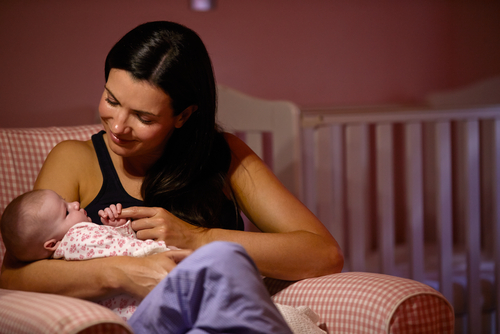
Photo: Shutterstock
Past research has indicated that newborns can see faces that are about 30 cm away. But are they able to tell one expression from another? That was a question that Svein Magnussen, now a retired professor in Norway, asked 15 years ago. It took a while but he now thinks he’s got it figured out. He says that yes indeed, a newborn can see your expressions if you are within a distance of 30cm from them.
The study was conducted by researchers at the Institute of psychology at The University of Oslo in collaboration with colleagues at the University of Uppsala in Sweden and Eclipse Optics in Stockholm, Sweden.
Researchers were able to demonstrate the visual perception newborns have with a combination of mathematics, technology and past insight of how infants see things. “Previously, when researchers tried to estimate exactly what a newborn baby sees, they invariably used still photos. But the real world is dynamic. Our idea was to use images in motion,” says professor emeritus Svein Magnussen from the Institute of Psychology.
Fifteen years ago, Magnussen wanted to test whether days-old infants were able to perceive facial expressions of those they could see. He and his colleagues thought that if infants could observe and mimic facial expressions, it may be because the faces were in motion.
He says, “Back then we had neither the equipment nor the technical competence to test our idea. We dug it out again only a year ago. So, our results are based on an old idea which nobody had tested in the meantime.”
For the new study, researchers combined modern techniques with past data on how vision works in babies. Information such as contrast sensitivity and spatial resolution from behavioral studies in the 1980s was available. The data included the findings that showing an infant a figure in front of a grey background made the infant look toward that figure.
Magnussen said, “Figures made up of black and white stripes were used. By choosing a certain stripe width and frequency, the field would appear uniformly grey, and the child would not direct its gaze towards it. Changing the width and frequency to make up figures, made it possible to determine the exact level of contrast and spatial resolution needed to make the infant direct its gaze towards the figure.”
Though this information was available to them, what the researchers further had to find out were answers to questions such as whether babies were able to recognize expression on an adult close-by.
Scientists showed videos of faces changing to display different emotions (removing the data they knew was unavailable to newborn infants) to adult subjects. This was done with the notion that if the adult participants were not able to recognize a facial expression, it could be assumed that an infant would not either.
When viewed at a distance of 30cm, adults identified facial expressions right in three of four cases. However, at an increased distance of 120cm, rate of identification was the same as a random response could effect. So it was concluded that the capability of recognizing facial expressions based on the visual capacity of a newborn reaches its limit at a distance of about 30cm.
“It’s important to remember that we have only investigated what the newborn infant can actually see, not whether they are able to make sense of it,” Magnussen points out.
Share your thoughts, leave a comment below. Please like FamiLife’s page on Facebook so that you get all our articles and others may find us.
